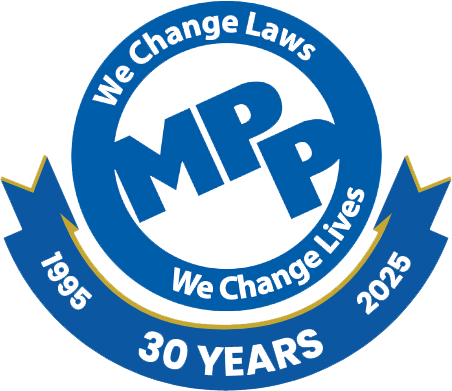- Take Action: Urge your state legislators to support a compassionate medical cannabis program!
Press Release
Teen Marijuana Use in Colorado and Washington Dropped More Than the National Average in 2014-2015

FOR IMMEDIATE RELEASE
Wednesday, December 21, 2016
Contact: Violet Cavendish
vcavendish@mpp.org
SAMHSA’s National Survey on Drug Use and Health finds slightly fewer teens in Colorado and Washington are using marijuana than in 2012-2013 (prior to the commencement of legal adult marijuana sales)
* Statement below from the Marijuana Policy Project’s Denver-based director of communications, Mason Tvert *
DENVER — The federal government quietly published new national survey data this week that shows rates of teen marijuana use in Colorado and Washington — the first two states to legalize and regulate marijuana for adult use — decreased more than the national average in 2014-2015. Fewer teens in the two states are reportedly using marijuana than in 2012-2013, just prior to the commencement of legal adult marijuana sales.
The Substance Abuse and Mental Health Services Administration (SAMHSA) released the results of the 2014-2015 National Survey on Drug Use and Health (NSDUH) on Tuesday along with a press release that did not include any mention of marijuana.
According to the NSDUH:
- In Colorado, the rate of 12-17-year-olds who used marijuana in the past month dropped 1.43 percentage points from 12.56% in 2013-2014 to 11.13% in 2014-2015, compared to 11.16% in 2012-2013. The rate of past-year use dropped 2.46 percentage points from 20.81% in 2013-2014 to 18.35% in 2014-2015, compared to 18.76% in 2012-2013.
- In Washington, the rate of 12-17-year-olds who used marijuana in the past month dropped 0.89 percentage points from 10.06% in 2013-2014 to 9.17% in 2014-2015, compared to 9.81% in 2012-2013. The rate of past-year use dropped 1.92 percentage points from 17.53% in 2013-2014 to 15.61% in 2014-2015, compared to 16.48% in 2012-2013.
- Nationwide, the rate of past-month marijuana use among 12-17-year-olds dropped 0.02 percentage points from 7.22% in 2013-2014 to 7.2% in 2014-2015, and the rate of past-year use dropped 0.42 percentage points from 13.28% to 12.86%.
The overall findings of the NSDUH are in line with those of the annual Monitoring the Future survey sponsored by the National Institute on Drug Abuse (NIDA), which were released last week and found little change in rates of teen marijuana use.
“I don’t have an explanation. This is somewhat surprising,” said NIDA Director Dr. Nora Volkow in an article published last week by U.S. News and World Report. “We had predicted based on the changes in legalization, culture in the U.S. as well as decreasing perceptions among teenagers that marijuana was harmful that [accessibility and use] would go up. But it hasn’t gone up.”
Statement from Mason Tvert, director of communications for the Marijuana Policy Project:
“Survey after survey is finding little change in rates of teen marijuana use despite big changes in marijuana laws around the nation. Colorado and Washington are dispelling the myth that regulating marijuana for adult use will somehow cause an increase in use among adolescents. Legalization opponents will surely continue to make dire predictions about teens, so lawmakers and voters need to be informed about these government reports that invalidate them.
“Decades of arresting and prosecuting countless adults failed to prevent teens from accessing and using marijuana. States like Colorado and Washington are taking a new approach and actually controlling the production and sale of marijuana. Their success has already inspired a handful of other states to adopt similar laws, and more are sure to follow.”
###
Founded in 1995, the Marijuana Policy Project (MPP) is the nation’s leading cannabis policy reform organization. MPP has played a central role in passing dozens of cannabis policy reforms in states across the country, including 14 successful cannabis legalization campaigns, and also works to advance federal reforms.
